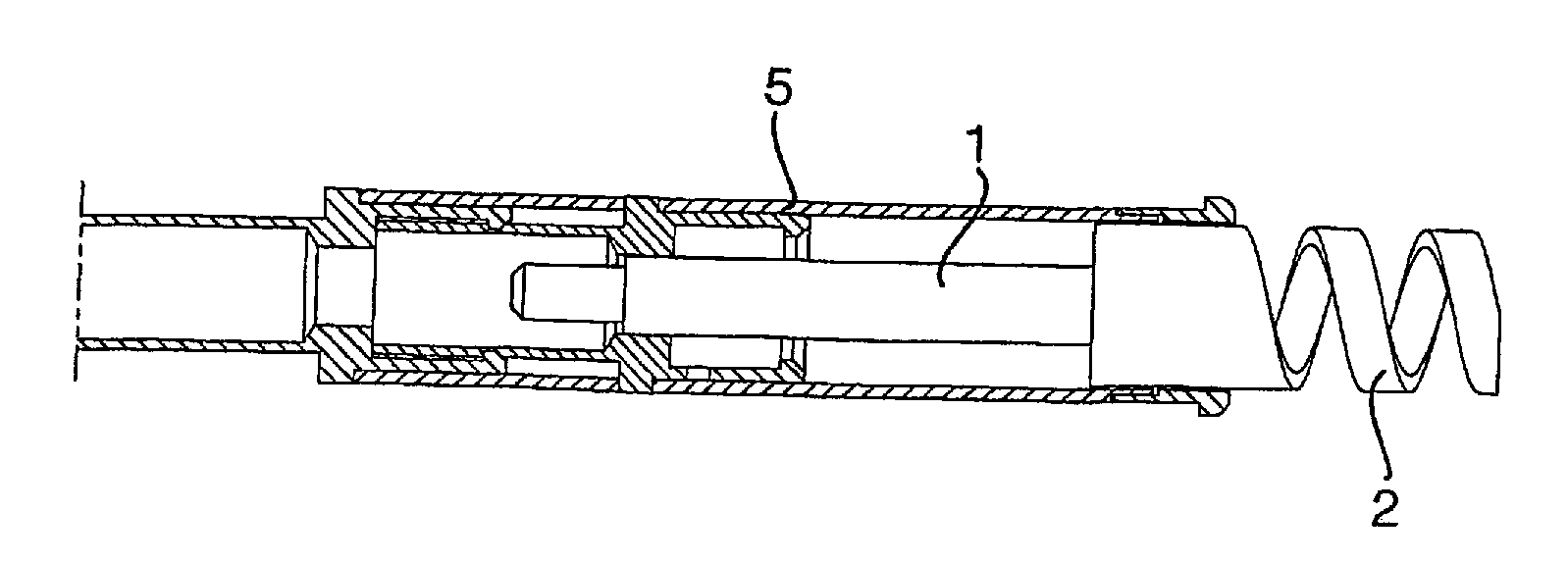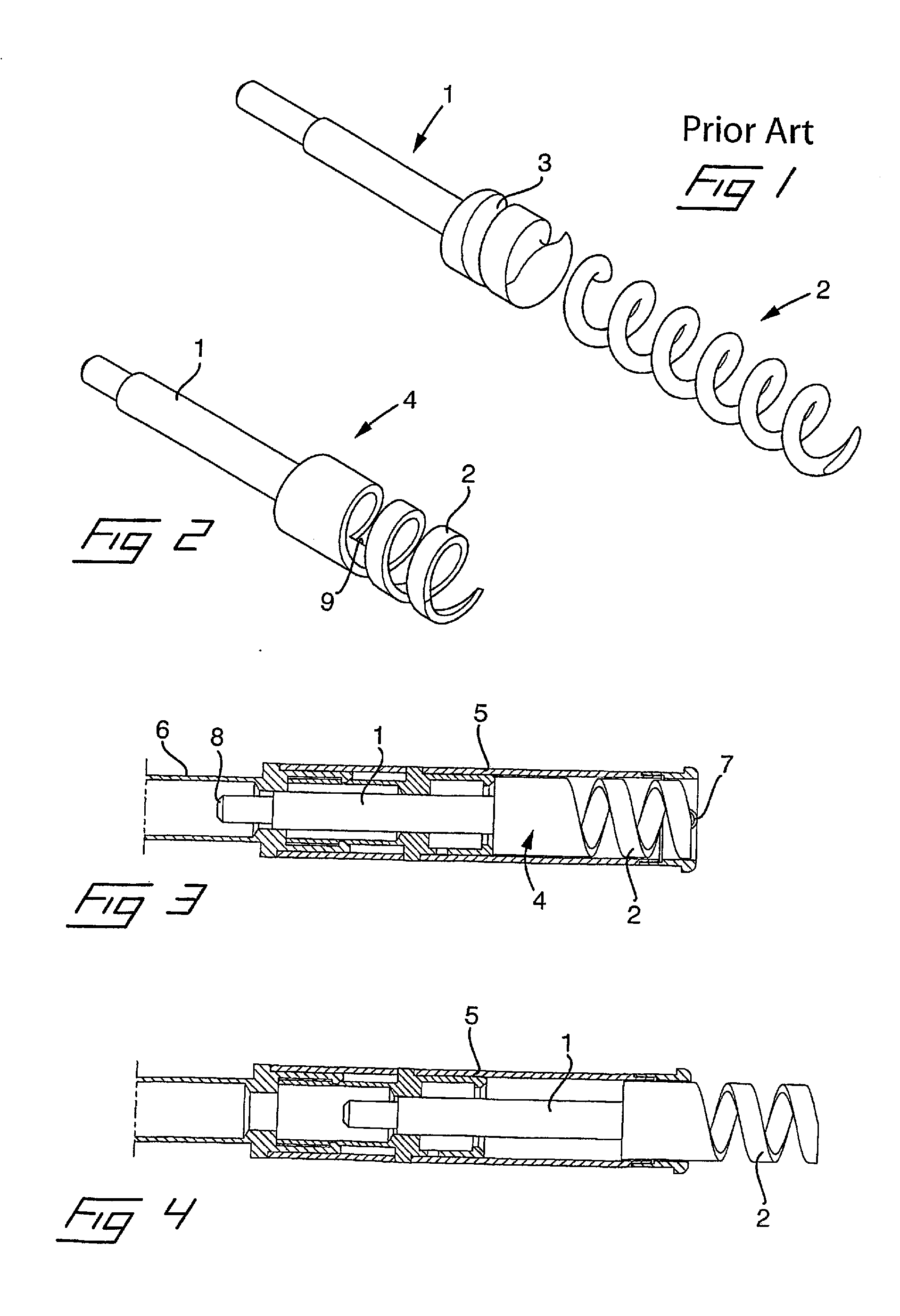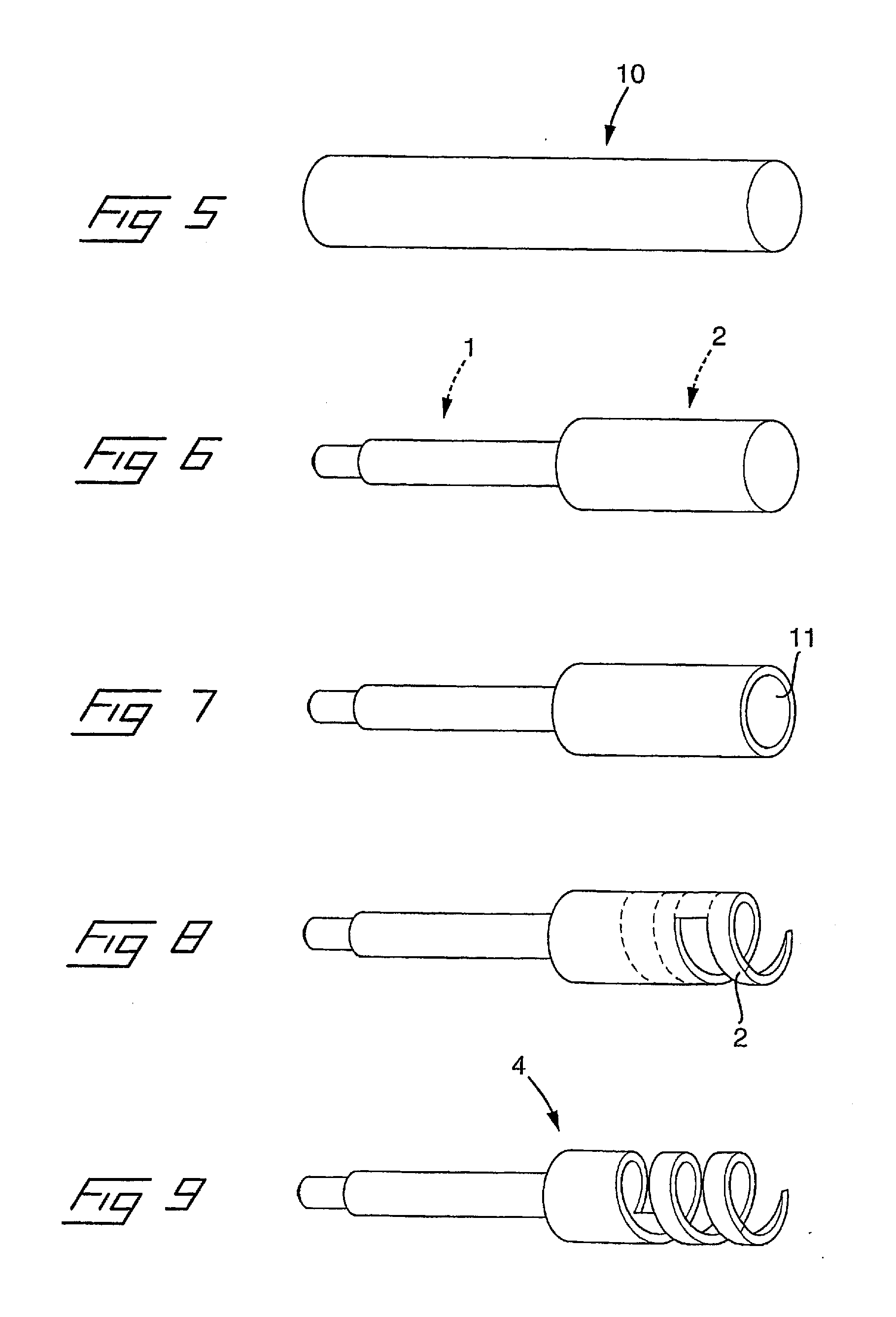Connecting device and method for manufacturing the same
a technology of connecting devices and manufacturing methods, applied in the manufacture of contact members, external electrodes, electrotherapy, etc., can solve the problems of increased cost, two components will become misaligned, and expensive manufacturing, so as to improve the impedance of the helix surface, improve the shape and facilitate the modification of the helix winding
- Summary
- Abstract
- Description
- Claims
- Application Information
AI Technical Summary
Benefits of technology
Problems solved by technology
Method used
Image
Examples
Embodiment Construction
[0021]Reference is first made to FIG. 1, in which an embodiment of a prior art connecting device is shown. From the perspective view in FIG. 1 is seen that the connecting device is assembled of a shaft 1 and a helix 2 in form of separate components, wherein the helix is attached to the shaft by way of the most proximal turns of the helix mating and being in engagement with helical grooves 3 being formed in the distal end of the shaft. This has to effect that the shaft and the helix has to be manufactured in separate manufacturing processes and then being assembled into one unit under consideration of proper alignment of and electrical contact between the shaft and the helix in relation to each other. This necessitates a separate attachment process, such as welding, and suitable adaptation measures, such as forming of the grooves 3, to make the shaft and helix fit together.
[0022]Now reference is made to FIG. 2 of the drawings, in which an embodiment of a connecting device according t...
PUM
| Property | Measurement | Unit |
|---|---|---|
| length | aaaaa | aaaaa |
| shape | aaaaa | aaaaa |
| distance | aaaaa | aaaaa |
Abstract
Description
Claims
Application Information
 Login to View More
Login to View More - R&D
- Intellectual Property
- Life Sciences
- Materials
- Tech Scout
- Unparalleled Data Quality
- Higher Quality Content
- 60% Fewer Hallucinations
Browse by: Latest US Patents, China's latest patents, Technical Efficacy Thesaurus, Application Domain, Technology Topic, Popular Technical Reports.
© 2025 PatSnap. All rights reserved.Legal|Privacy policy|Modern Slavery Act Transparency Statement|Sitemap|About US| Contact US: help@patsnap.com



